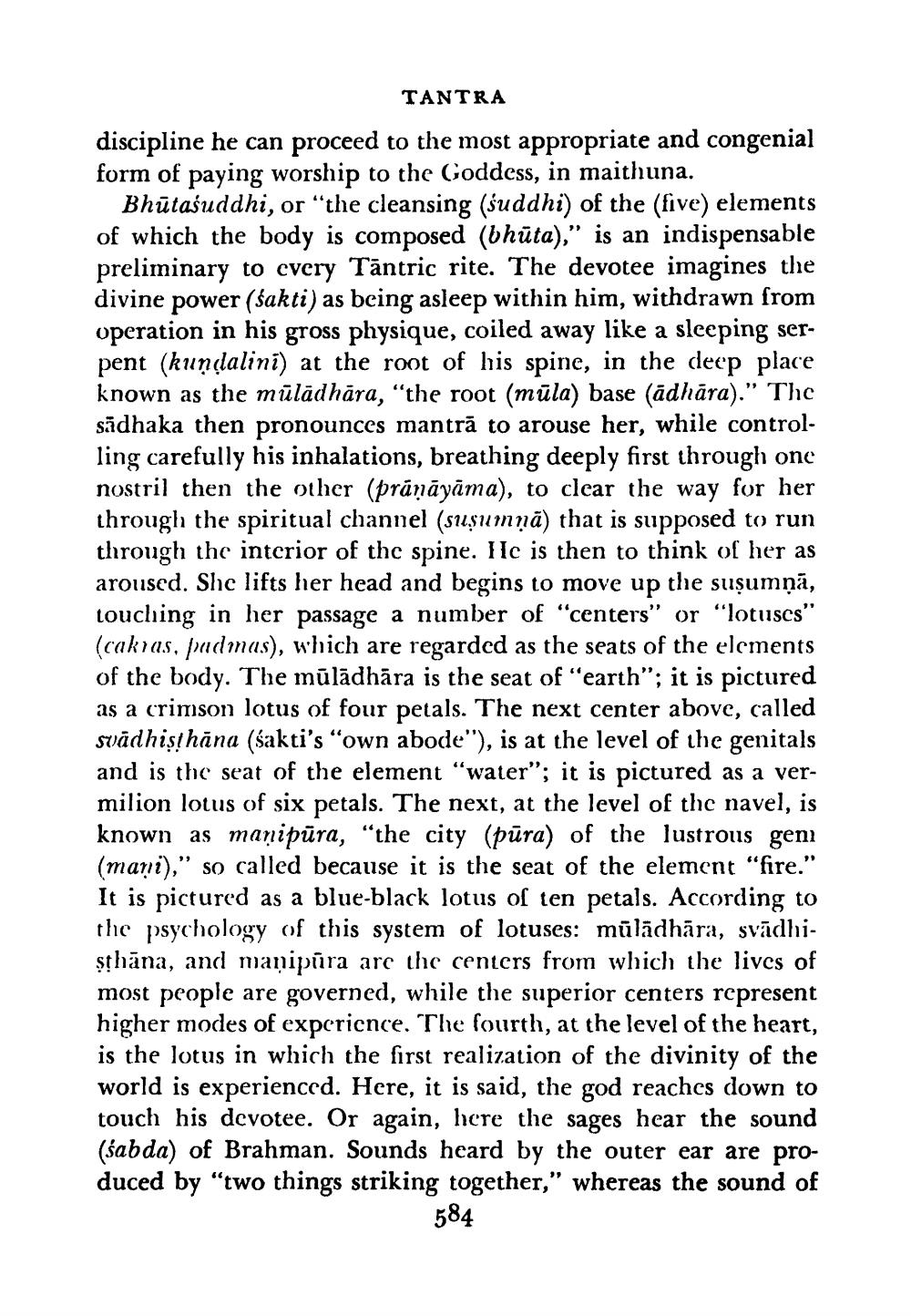________________
TANTRA
discipline he can proceed to the most appropriate and congenial form of paying worship to the Goddess, in maithuna.
Bhūtasuddhi, or “the cleansing (suddhi) of the (five) elements of which the body is composed (bhūta),” is an indispensable preliminary to cvery Tāntric rite. The devotee imagines the divine power (sakti) as being asleep within him, withdrawn from operation in his gross physique, coiled away like a sleeping serpent (kundalini) at the root of his spine, in the deep place known as the mülādhāra, “the root (müla) base (adhāra).” The sādhaka then pronounces mantrā to arouse her, while controlling carefully his inhalations, breathing deeply first through one nostril then the other (prāņāyāma), to clear the way for her through the spiritual channel (suşumņā) that is supposed to run through the interior of the spine. He is then to think of her as aroused. She lifts her head and begins to move up the suşumņā, touching in her passage a number of "centers" or "lotuscs" (cakras, pudmus), which are regarded as the seats of the elements of the body. The mūlādhāra is the seat of "earth"; it is pictured as a crimson lotus of four petals. The next center above, called svādhisthāna (sakti's "own abode"), is at the level of the genitals and is the seat of the element "water"; it is pictured as a vermilion lotus of six petals. The next, at the level of the navel, is known as manipūra, “the city (pūra) of the lustrous geni (mani)," so called because it is the seat of the element "fire." It is pictured as a blue-black lotus of ten petals. According to the psychology of this system of lotuses: mūlādhāra, svādhisthāna, and manipūra are the centers from which the lives of most people are governed, while the superior centers represent higher modes of experience. The fourth, at the level of the heart, is the lotus in which the first realization of the divinity of the world is experienced. Here, it is said, the god reaches down to touch his devotee. Or again, here the sages hear the sound (sabda) of Brahman. Sounds heard by the outer ear are produced by "two things striking together," whereas the sound of
584




